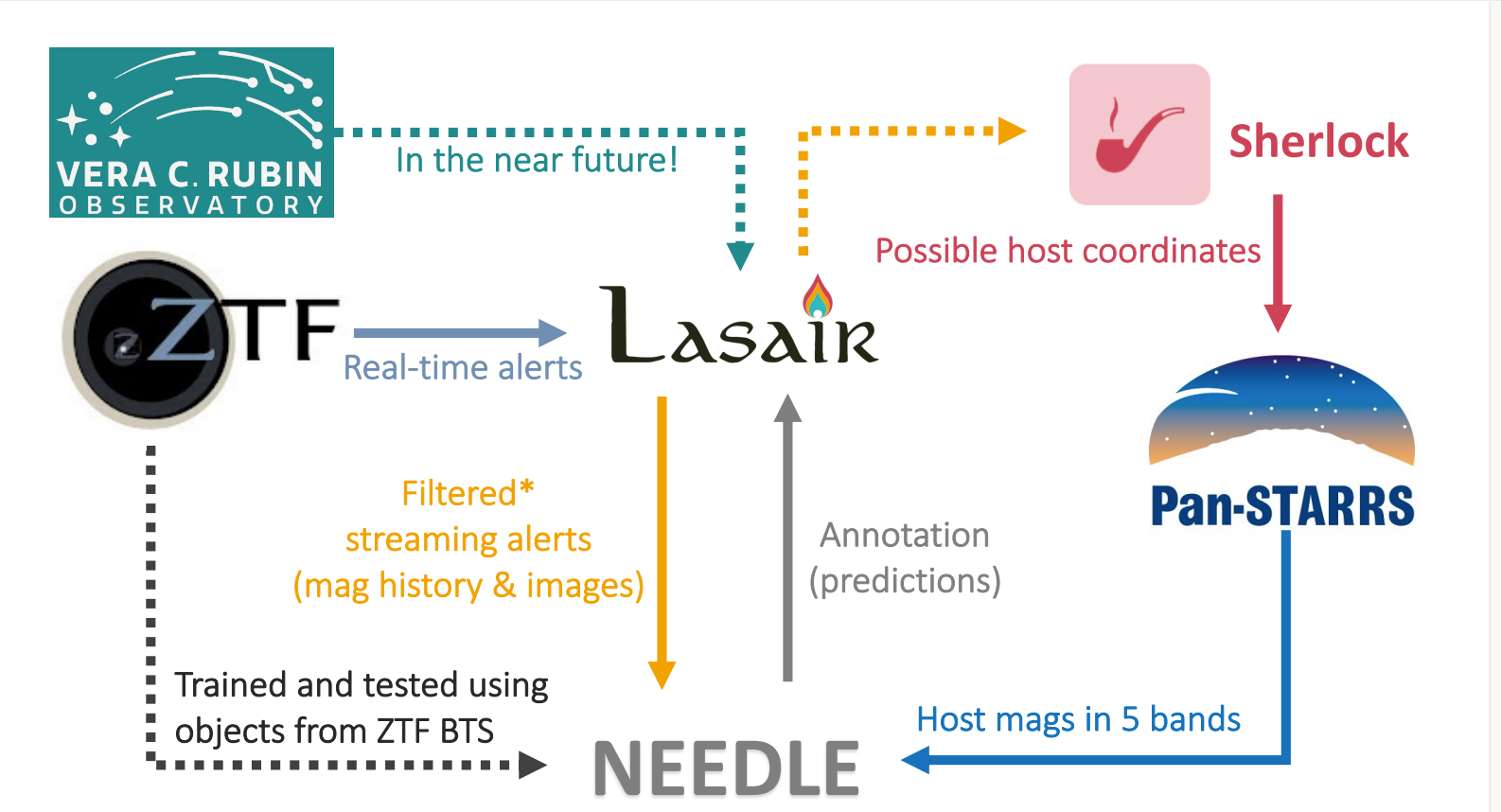NEEDLE set to discover large samples of rare events
A new paper introduces NEEDLE, a tool for discovering large samples of rare events designed for the Lasair alert broker.
Published in the June 2024 edition of MNRAS, the paper is entitled NEural Engine for Discovering Luminous Events (NEEDLE): identifying rare transient candidates in real time from host galaxy images. The authors are Xinyue Sheng Xinyue Sheng, Matt Nicholl, Ken Smith , David Young , Roy Williams, Heloise Stevance, Stephen Smartt, Shubham Srivastav and Thomas Moore.
Known for their efficiency in analysing large data sets, machine learning-based classifiers have been widely used in wide-field sky survey pipelines. The Vera C. Rubin Observatory Legacy Survey of Space and Time (LSST) will generate millions of real-time alerts every night, enabling the discovery of large samples of rare events. Identifying such objects soon after explosion will be essential to study their evolution. This requires a machine learning framework that makes use of all the information available, including light curve, host galaxy and other contextual data.
Using ~5400 transients from the ZTF Bright Transient Survey as training and testing data, NEEDLE was developed as a novel hybrid (convolutional neural network + dense neural network) classifier to select for two rare classes with strong environmental preferences: superluminous supernovae (SLSNe) preferring dwarf galaxies, and tidal disruption events (TDEs) occurring in the centres of nucleated galaxies.
The network is designed with LSST in mind; performance is expected to improve further with the higher resolution images and more accurate transient and host photometry that will be available from Rubin. The system is currently deployed as an annotator on the UK alert broker, Lasair, to provide predictions to the community in real time.
→ Access the paper NEural Engine for Discovering Luminous Events (NEEDLE): identifying rare transient candidates in real time from host galaxy images.

The NEEDLE pipeline design for the alert broker Lasair. NEEDLE receives ZTF (and ultimately LSST) alerts from Lasair via a customized SQL filter to remove old or bogus objects. The science and reference images are contained in the ZTF alerts, or requested from the Rubin Science Platform. If they pass the quality checker, the host metadata will be fetched from sherlock and Pan-STARRS. Finally, NEEDLE will return the probabilities for the three classes to the Lasair annotation database, allowing them to be used in subsequent alert filters by any user.